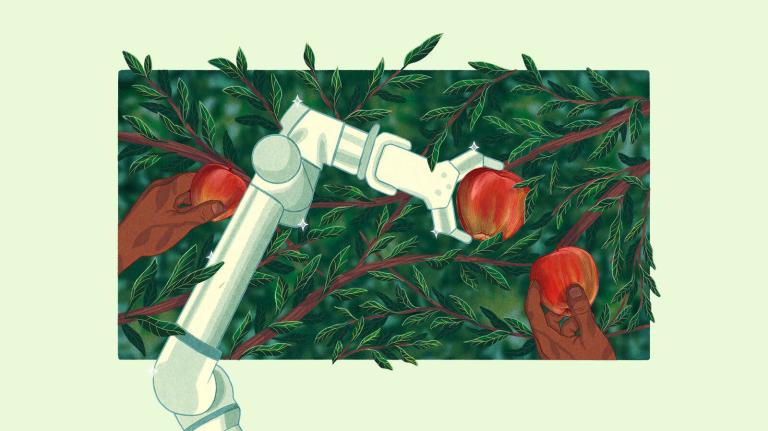 For many years, raw-milk advocates have claimed that unpasteurized milk counters lactose intolerance — the upset stomach many people feel after consuming dairy products. There have been loads of anecdotal claims, and an unpublished study of raw milk drinkers in Michigan in 2007 showed that more than 80 percent of 155 individuals who said they had been diagnosed with lactose intolerance could handle raw milk without problems.
For many years, raw-milk advocates have claimed that unpasteurized milk counters lactose intolerance — the upset stomach many people feel after consuming dairy products. There have been loads of anecdotal claims, and an unpublished study of raw milk drinkers in Michigan in 2007 showed that more than 80 percent of 155 individuals who said they had been diagnosed with lactose intolerance could handle raw milk without problems.
But opponents of raw milk, prime among them the U.S. Food and Drug Administration, have always been adamant that there’s no difference between raw and pasteurized milk for individuals who are lactose intolerant.
Some new scientific evidence gives ammunition to the FDA’s viewpoint. In a just-completed study out of Stanford Medical School, Christopher Gardner, an associate professor of medicine, concludes, “The data fail to support our hypothesis that Raw Milk confers some benefit over Pasteurized Milk in the form of an improvement in the experience of symptoms of lactose intolerant adults.”
At the same time, though, the study raises important questions about just how widespread real lactose intolerance is, suggesting it may be far less prevalent than the FDA and other public health observers have long assumed.
As for the new study, conducted earlier this year, participants went through three eight-day phases during which they consumed pasteurized milk, raw milk, and soy milk. Gardner notes that “the severity of the symptoms was virtually identical for the raw vs. pasteurized milk, while the symptoms of the soy milk were quite a bit, and statistically significantly, lower.”
Ironically, the study was financed by a small group of raw milk advocates, including Mark McAfee of Organic Pastures Dairy Company and members of the Weston A. Price Foundation. They are quick to point out the biggest red flag associated with the study: that it included only 16 people.
In Gardner’s opinion, a larger size sampling wouldn’t have made an appreciable difference. “The size of the study was smaller than we had hoped,” he states. “The final number enrolled was 16 (original target was 25). However, despite the small sample size, the results are remarkably consistent. I do not think the sample size proved to be a problem for the study, and that a larger study would have generated the same overall finding, just more strongly.”
However, Gardner does allow that a big part of the reason the sample size was so small was that it was more difficult than expected to find individuals who were truly lactose intolerant, which is strange, since the FDA on its website includes an estimate that between 30 million and 50 million Americans are lactose intolerant, or between 10 and 17 percent of the entire population. Gardner says that of more than 400 people who expressed interest in participating in the study, the number was eventually whittled down to 63. “All 63 considered themselves to be lactose intolerant and all 63 reported having symptoms of lactose intolerance (this was one of the primary inclusion criteria).” But then 36 failed the standard medical test for lactose intolerance, which is an examination of the amount of hydrogen in their breath. “In other words, more than half of the potential candidates who thought they were lactose intolerant were technically not lactose intolerant,” explains Gardner.
Why would so many individuals who think they are lactose intolerant not be lactose intolerant? Gardner suggests that many individuals, like the 80 percent-plus in the 2007 Michigan study who said they could tolerate raw milk, were “misdiagnosed.”
Mark McAfee of Organic Pastures ventures another explanation: That there are really two groups of individuals with lactose problems — a small group that is truly lactose intolerant, and a second group that is allergic or otherwise intolerant of pasteurized milk, but can tolerate raw milk without problems. “There are lots of people that think they are lactose intolerant, but are clinically just not lactose intolerant,” he says. “When you are a consumer there is just no denial of gas cramps and diarrhea regardless of a (hydrogen) test result.”
To add weight to his point, McAfee in the last two weeks invited 5,000 raw milk drinkers on his mailing list who thought they had lactose intolerance problems to answer a survey he designed. Of 498 who answered the survey, 69 percent said they no longer experience the typical symptoms of lactose intolerance they used to experience, like bloating, cramping, diarrhea, and gas.
Told of McAfee’s report, Gardner responded, “We should ask the people in your survey who reported their impression of the benefits of raw milk to put themselves through the study protocol we developed.”
Seems like we have a possible Phase 2 here.
I would add that I have generally avoided trying to speculate on raw milk’s health benefits. I respect individuals who say raw milk provides relief from various health problems, including lactose intolerance. But it’s clear there is a dearth of what would be considered scientifically significant data. Gardner’s study is a welcome opening effort of interest to the growing numbers of consumers worried about possible health problems with pasteurized milk. Hopefully it will point the way to much additional exploration.

